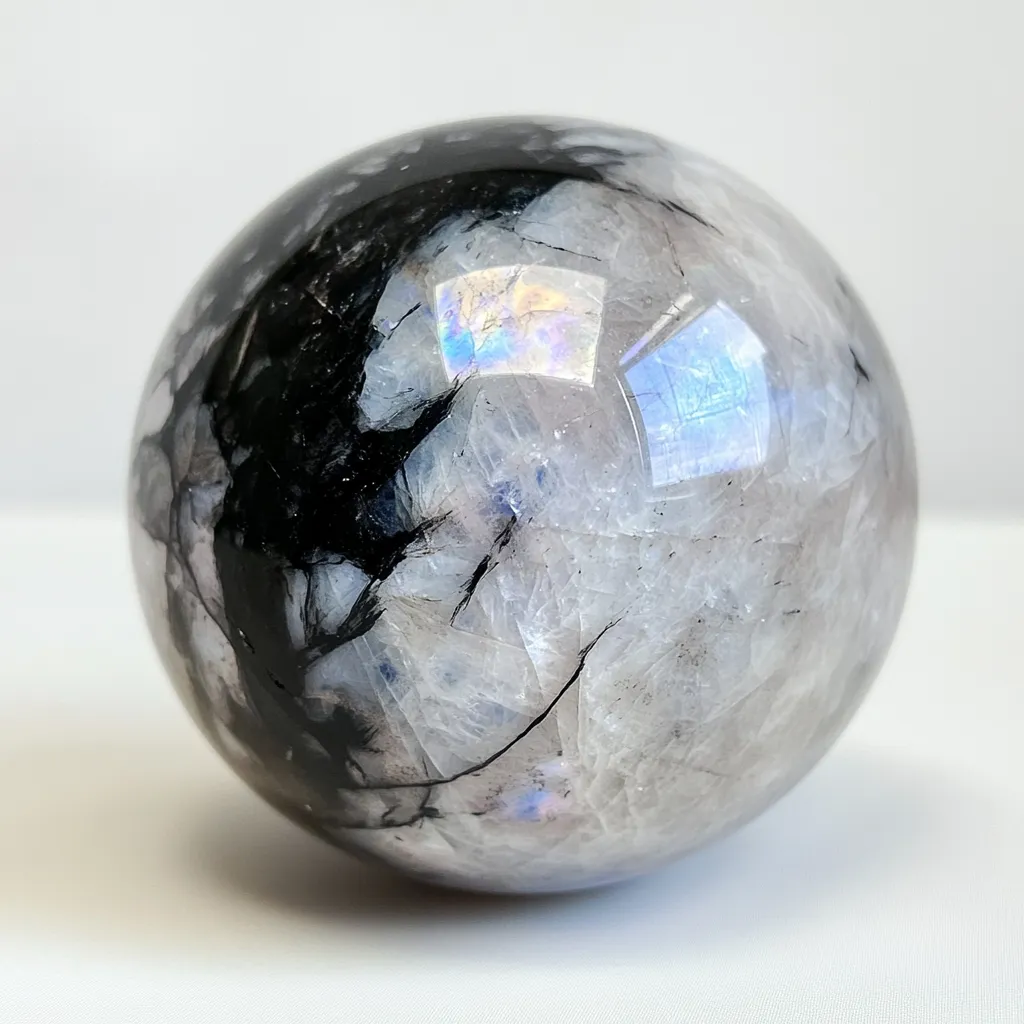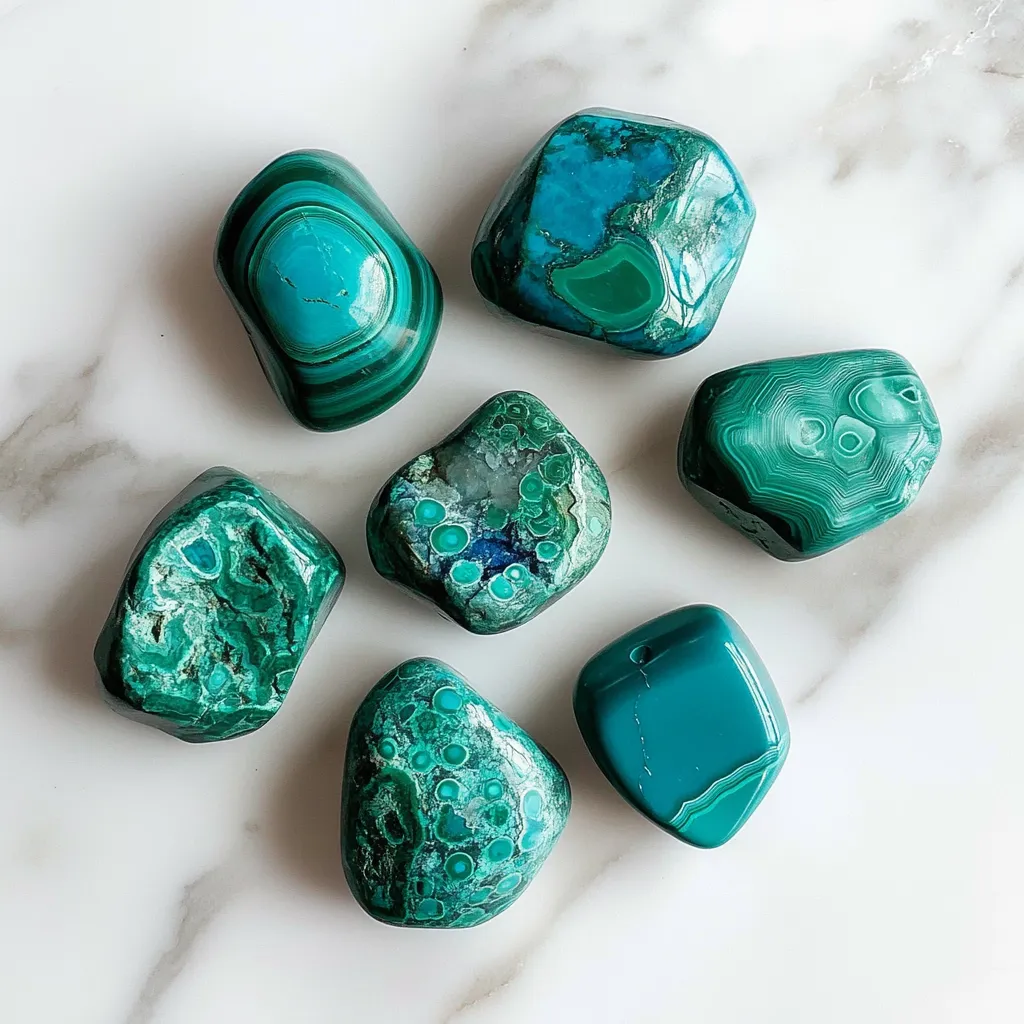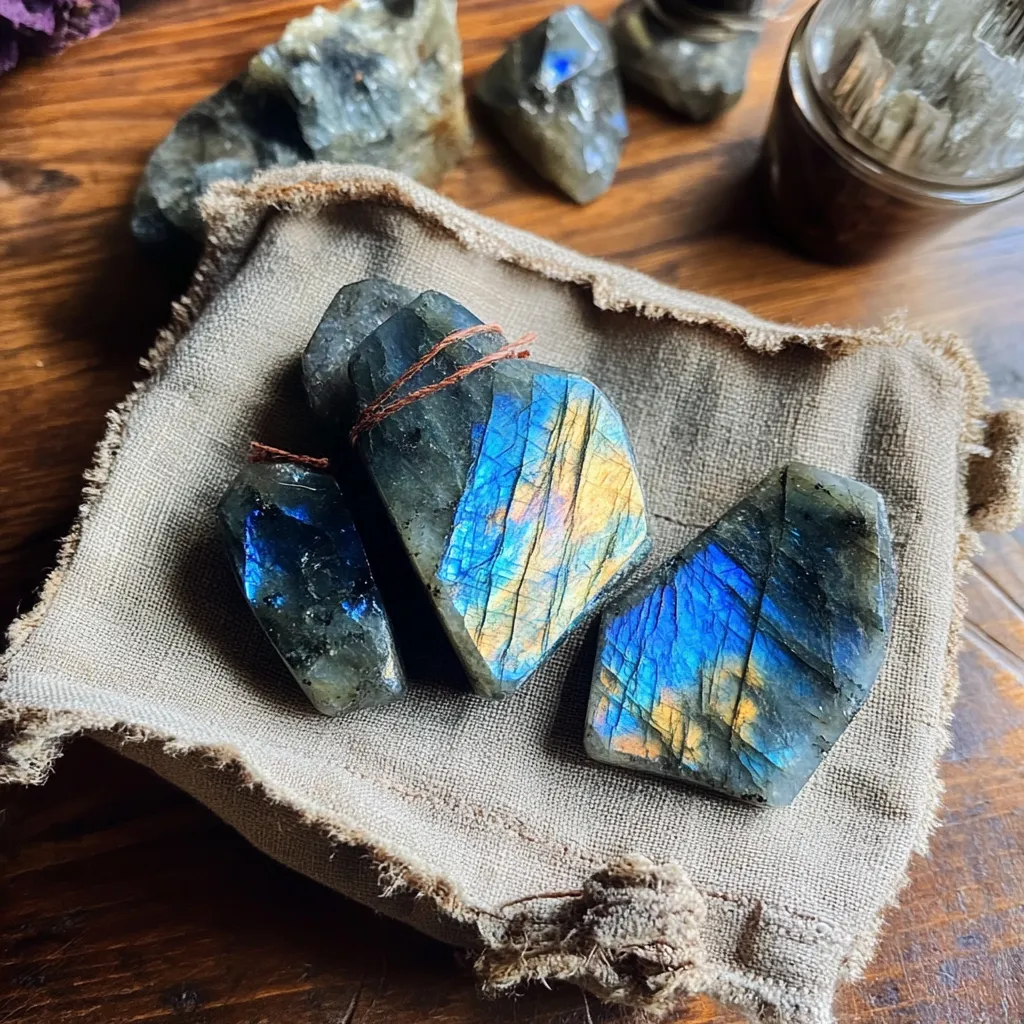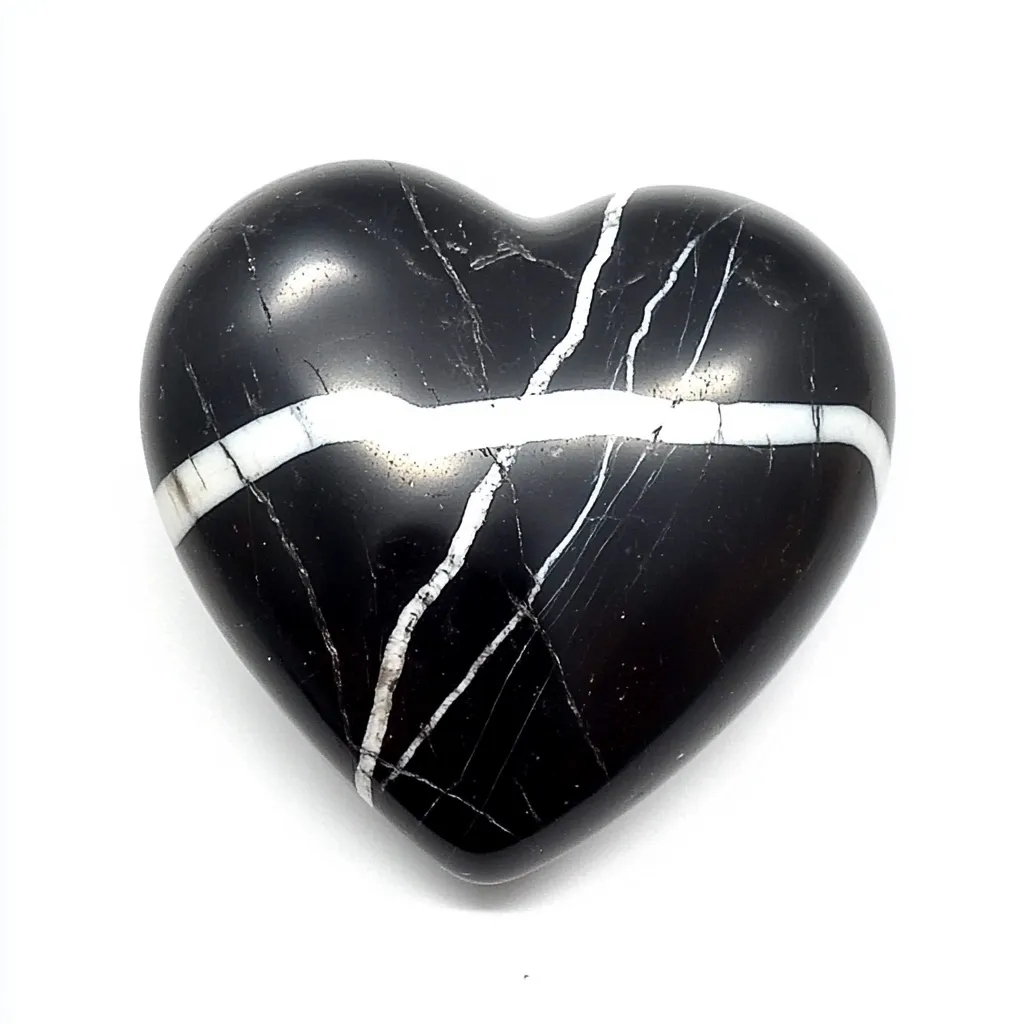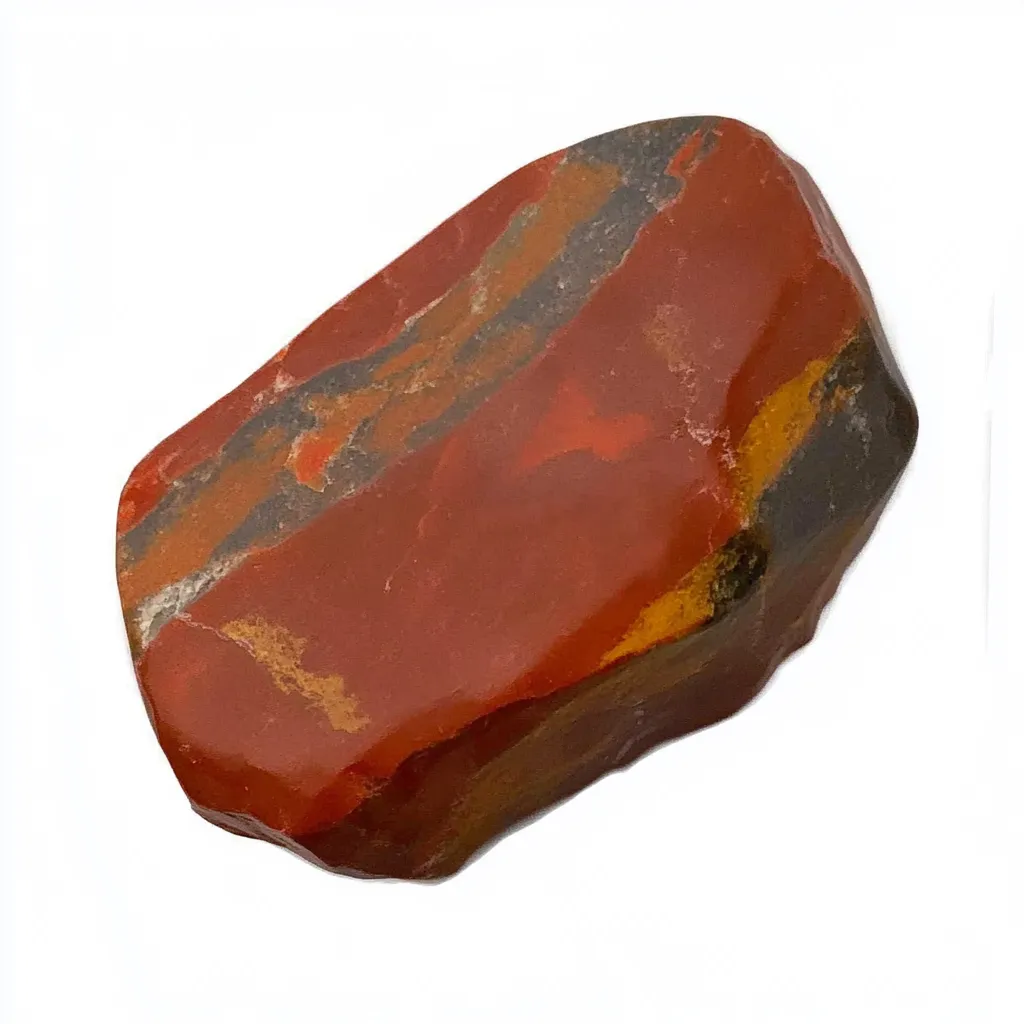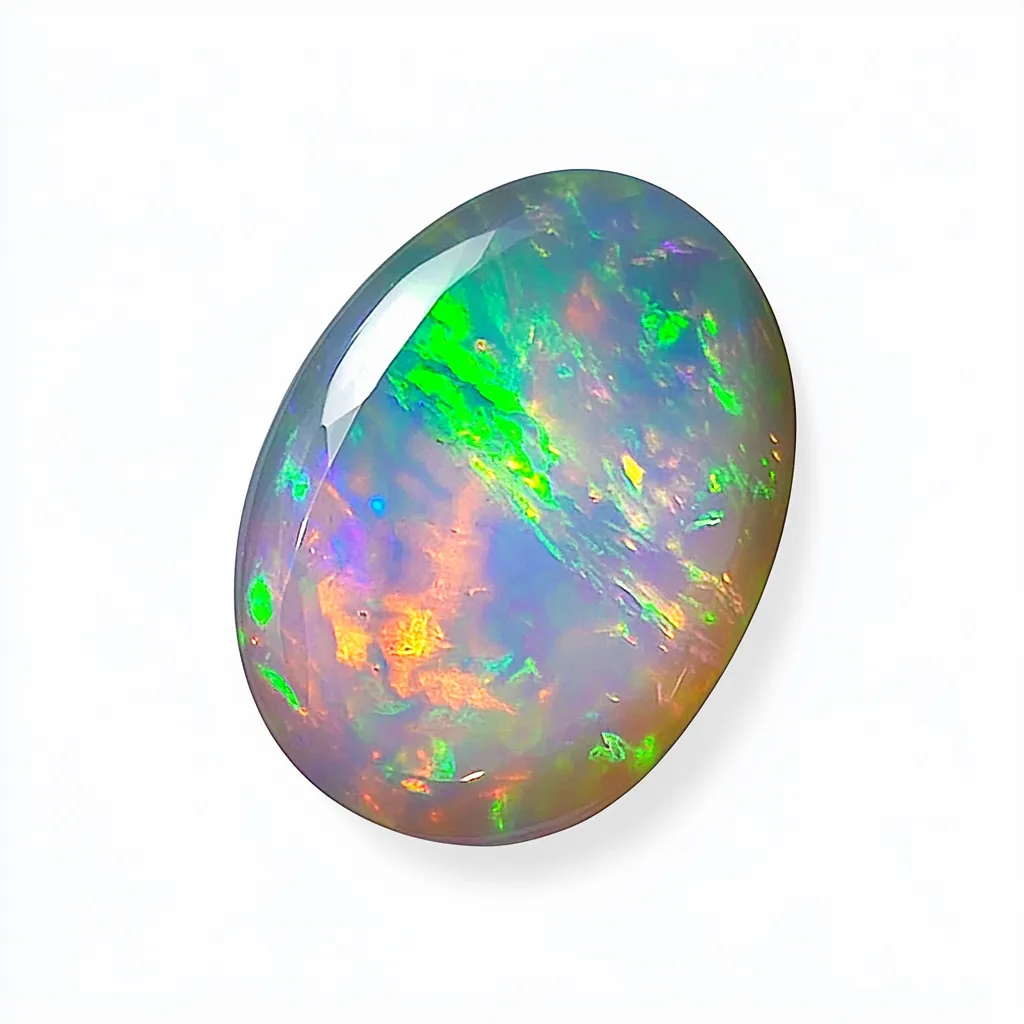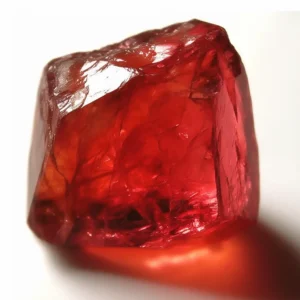

Ruby Pronunciation: Ruby speaks “ROO-bee.”
Ruby ranks second only to diamonds on the Mohs hardness scale, with a rating of 9, making it one of the toughest natural gemstones. The gemstone luster is vitreous to adamantine, which means it brilliantly reflects light and produces a vivid and mesmerizing sparkle.
Ruby falls into the trigonal crystal system, which helps to explain its unique growth patterns and structure.
Etymology:
The Latin “ruber,” meaning “red,” is the source of the word “ruby,” with a nod to its deep and fiery hue.
Location:
Mostly found in Myanmar, Thailand, Sri Lanka, and Madagascar, Myanmar is historically known for turning out the best stones.
Meaning and energy
Ruby has long been connected with protection, energy, and passion. This fiery gemstone is thought to spark the inner flame of vitality, bravery, and strength. Rubies have been prized in many societies for their capacity to inspire confidence and increase life’s passion. Often referred to as the stone of kings, it represents wealth and success; many of the past rulers wore rubies to augment their authority and position.
Spiritually, people view ruby as a stone that resonates strongly with life force energy. It is supposed to boost drive, inspire adventure, and encourage one to act boldly. For those trying to conquer emotional obstacles or overcome anxiety, ruby is considered a beloved gemstone. Ruby jewelry or a ruby crystal close by can inspire passion and drive, acting as a potent friend for those aiming high.
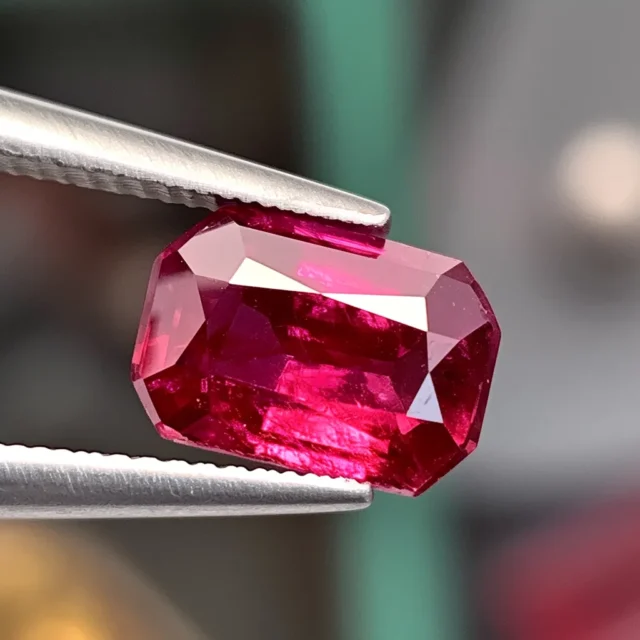
Variants of Ruby Gemstone
Despite their well-known deep red hue, rubies come in a wide range of tones and varieties. The most well-known and valuable type is the Burmese ruby, which shows a pure, pigeon-blood red color with a wonderful glow. Conversely, because of the iron content in the stone, Thai rubies often have a darker, brownish-red look.
Other variants include Sri Lankan rubies, which often have a lighter, pinkish-red tone, and African rubies, distinguished by their rich, deep color. Certain rubies also show asterism, a lovely star-like impression created when light reflects off their surface. These star rubies are much sought after for their special optical characteristics.

Variations of Ruby Table
| Change | Origination | Characteristics of Color | Special Character |
|---|---|---|---|
| Burmese Ruby | Myanmar | Thorough pigeon-blood red | Extraordinary radiance |
| Thai Ruby | Thailand | Dark red with brownish accents | High iron content |
| Nigerian Ruby | Africa | Rich, intense red | Reasonable cost |
| Sri Lankan Ruby | Sri Lanka | Light red in pinkish-red | Thinner colors |
| Star Ruby | Various | Red with an almost star-like quality | An asterism phenomenon |
Historical Stories
From ancient times, rubies have been rather important in folklore and mythology. Warriors in old Burma thought rubies made them unbeatable in combat. Believing the stone would bring success and heal wounds, they would even embed these jewels into their skin. Nobles in medieval Europe preferred rubies, believing them to bring wisdom, health, and success in love.
Believing they would bestow vitality and longevity, ancient Indian societies linked rubies with the sun. The gem was often used in ceremonies and offerings to gods to seek blessings. Some legends even assert that rubies, representing their inner fire and unmatched energy, could boil water and shine through thick clothes.

Physical Ruby Gemstone Healing Agents
Ruby is believed to possess powerful healing properties that extend beyond its aesthetic appeal. Many crystal aficionados support heart health and circulation by wearing rubies. Often recommended for individuals experiencing low energy, fatigue, or anemia, rubies are associated with blood and vitality. Certain practitioners also assert that carrying or wearing a ruby helps the body to detoxify itself and increase general physical endurance.
Another widely held belief is that rubies boost immunity, strengthening the body to resist disease. It is also supposed to support reproductive health, so raising fertility and sexual energy. Many people seek out Ruby for its capacity to boost vitality, endurance, and general physical well-being.
Healing Table for Physical Conditions
| Healing Advantage | Impact on Body |
| Increases circulation | Improves cardiac health and blood flow |
| Increases vitality | Provides assistance with weakness and fatigue |
| Improves immunity | Raises resistance to disease |
| Advances reproductive wellness | Boosts vitality and fertility |
| Cleans the body | Helps in detoxifying poisons |

Ruby Gemstone Healing Powers: Emotionally
Emotionally speaking, ruby is a great stone for increasing self-worth and confidence. It is supposed to enable people to get over self-doubt and insecurity so they may welcome their abilities and boldly pursue their goals. Many think ruby has a grounding energy that helps release negative feelings, including anxiety, fear, and grief.
Ruby is also known as a stone of love and passion, revitalizing romance and strengthening emotional ties in marriage. For those trying to draw love or deepen their current relationships, it is a wonderful stone since it evokes happy, exciting, and emotional warmth. Whether worn as jewelry or kept in a personal space, ruby is considered a gemstone that brings emotional balance and happiness.
Healing Table: Emotional
| Emotional Gain | Influence on Feelings and Mind |
| Increases hope | Boosts confidence and self-worth |
| Disputes negativity | Lessens anxiety, sadness, and fear |
| Inspires passion | Strengthens personal and love relationships |
| Fosters happiness | Increases pleasure and excitement |
| Brings emotional harmony | Helps to stabilize mental clarity and attitude |

Chakra Ruby Gemstone Healing Attributes
Ruby is intimately connected to the root chakra, which grounds and stabilizes us. Ruby increases security by activating this chakra, so she guides people toward more centering and earth connection. For those who battle restlessness or uncertainty, the heart makes this a great stone.
Ruby can also activate the heart chakra, radiating compassion, love, and warmth. It exhorts people to let love open their hearts in friendships as much as in romantic relationships. Many practitioners use Ruby in chakra healing techniques to remove obstacles and encourage the free flow of energy throughout the body.
Chakra Healing Chart
| Chakra | Influence of Ruby |
| Root Chakra | Improves stability and ground truth |
| Heart Chakra | Encourages love and emotional warmth |
| Solar Plexus Chakra | Builds personal power and confidence |
| Sacral Chakra | Fuels enthusiasm and imagination |
| Crown Chakra | Enhances spiritual relationships |
Ruby is a gemstone of resilience, love, and might. Whether prized for its energy or beauty, it remains one of the most sought-after and beloved crystals available worldwide.

Questions and Answers
Further Insights on Ruby
Ruby vs. Garnet
The distinction between Garnet and Ruby is among the most often confusing aspects in the gemstone universe. Although both stones have a deep red hue, their compositions, hardness, and value differ completely. Ruby is quite durable since it belongs to the corundum family and scores 9 on the Mohs hardness scale. On the other hand, garnet is a silicate mineral with a hardness of 6.5–7.5; thus, it is more likely to be scratched. Furthermore, whereas garnets typically lean toward a brownish-red or purplish-red hue, rubies often have a more vivid red hue with traces of blue.
Comparison of Ruby and Garnet
| Feature | Ruby | Garnet |
|---|---|---|
| Composition | Corundum (Aluminum Oxide) | Silicate Mineral |
| Hardness | 9 on Mohs scale | 6.5–7.5 on Mohs scale |
| Color | Vivid red with blue traces | Brownish-red or purplish-red |
| Value | High, sometimes exceeding diamonds | Generally lower than ruby |
A Raw Ruby Gemstone
A raw ruby gemstone is an uncut, unpolished form of ruby with retained natural crystalline structure. Buried in basalt or marble, these stones often reveal themselves. Usually opaque with obvious inclusions, the raw form is not as brilliant or deep red once cut and polished. Many collectors and jewelers value raw rubies for their authenticity and the potential to transform them into magnificent jewelry pieces.
Zoisite with Ruby Interpretive Meaning
Ruby crystals set in green zoisite create a distinctive mix called zoisite with Ruby. It is thought that this striking juxtaposition of red and green has strong metaphysical resonance. Usually connected with balance, spiritual development, and energy renewal, the stone represents Since it is supposed to boost creativity, emotional strength, and connection to one’s higher self, many crystal aficionados use it for meditation and healing needs.
Ruby Purple, Purple
Although classic rubies are well-known for their rich red color, some specimens show a purplish hue—often known as a Purple Ruby. Iron and chromium are trace elements that cause this variation. Rare, and occasionally confused for sapphires, are purple rubies. Nevertheless, they are a special and valuable selection for collectors since they keep the same hardness and durability as ordinary rubies.
Price of Ruby Stone
Factors including color, clarity, cut, and carat weight greatly affect the cost of ruby stones. Sometimes valued more than diamonds, high-quality rubies with a pure, vivid red hue and few inclusions can demand quite high prices. Particularly valuable, with some fetching thousands of dollars per carat, are Burmese rubies.
Factors Influencing Ruby Prices
| Factor | Impact on Price |
|---|---|
| Color | Vivid red hues with blue traces increase value |
| Clarity | Fewer inclusions mean higher prices |
| Cut | Well-cut rubies fetch better prices |
| Carat Weight | Larger rubies are significantly more expensive |
| Origin | Burmese rubies are among the most valuable |
Ruby’s and Sapphire’s Nuptials
Ruby and Sapphire Wedding Jewelry’s rich symbolism and vivid colors have helped it become rather well-known recently. Rubies stand for passion and love; sapphires stand for wisdom and allegiance. Many couples decide to reflect a harmonic and long-lasting relationship by including both gemstones in their wedding rings.
Ruby is Against Sapphire, Then Emerald
Ruby, sapphire, and emerald each have special beauty when compared among one another. Both rubies and sapphires are members of the corundum family; while sapphires come in various colors, most usually blue, rubies show a red hue from chromium. Conversely, emeralds are a range of beryl with a unique green hue resulting from minute levels of chromium and vanadium. On the Mohs scale, rubies and sapphires score 9 for hardness, making them more durable than emeralds, which score 7.5–8 and usually feature more inclusions.
The Actual Ruby Price
Finding the real ruby price calls for several quality considerations. From a few hundred to several thousand dollars per carat, a premium, natural ruby with outstanding clarity, deep red hue, and well-executed cut can range. Though far less expensive, synthetic or treated rubies lack the investment value of natural stones.
1-Carat Ruby Worth
The 1-carat ruby’s worth depends much on origin, color, and clarity. While lower-grade rubies might sell for a few hundred dollars, a fine-quality Burmese ruby can be worth anywhere between $1,000 and $10,000 per carat. Though they are much less valuable, treated or synthetic rubies provide a reasonably priced substitute for those looking for the beauty of a ruby without paying outrageous prices.
Ruby Durability
Ruby hardness is one of the main reasons why rubies are so sought-after in jewelry. Second only to diamonds, rubies are among the toughest natural gemstones; their Mohs scale rating is 9. Whether in rings, necklaces, or bracelets, this outstanding hardness makes rubies resistant to scratches and perfect for daily wear.

